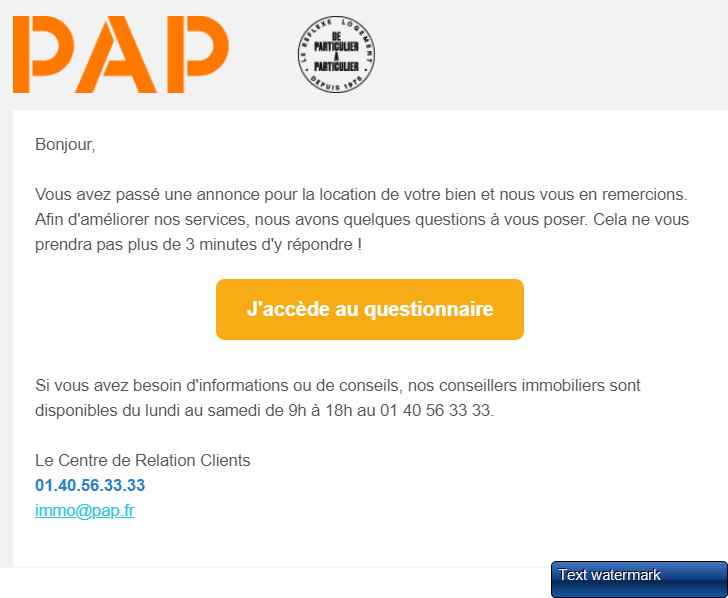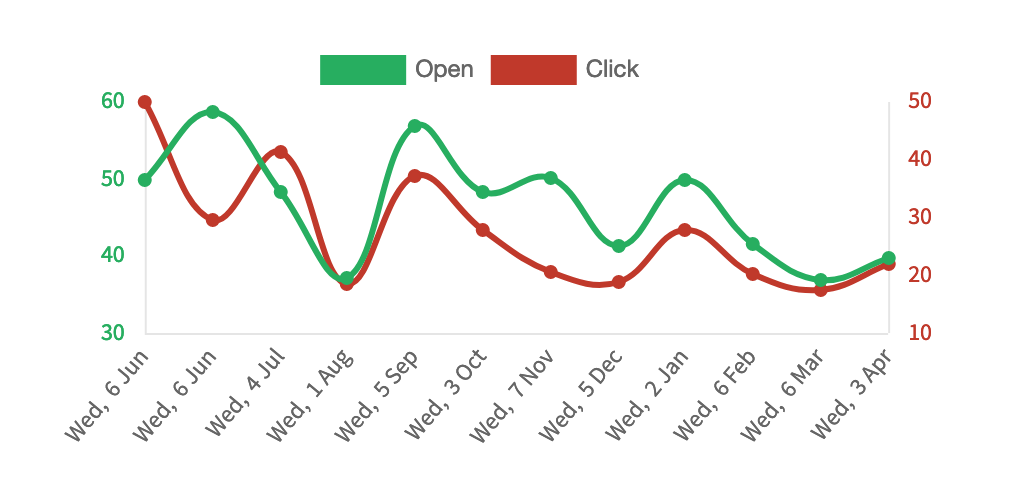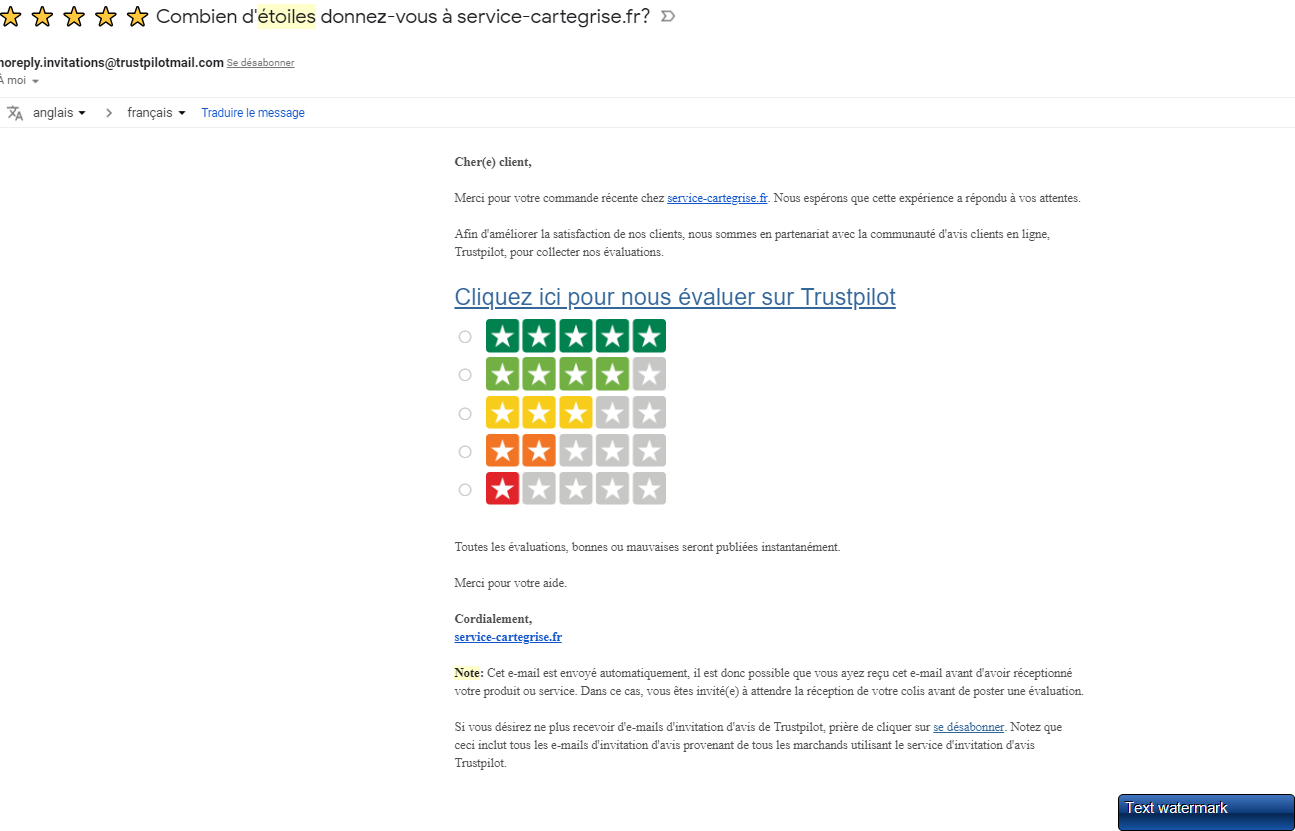
Consulting customer reviews is often the first action one takes on the Internet when choosing a restaurant or booking a hotel. Indeed, who wants to spend an evening in an establishment with bad ratings and negative comments? Customer reviews allow you to take care of your e-reputation, to increase your sales, to bring content with more added value to your customers and to better answer their needs… Strategies that we decrypt for you in this article!
First strategy : segment your customer portfolio
Before asking your customers to leave reviews on your brand, product or service, you need to determine the objective of this approach. Do you want to gain notoriety? Get positive ratings? If yes, on which products/services? With which customers?
Once your objectives are defined, the challenge is to segment your customers in order to determine those who are most likely to leave a review.
A customer segmentation list can be formalized as follows:
- Customers who have just purchased a product/service;
- Customers who have purchased your products or services several times and have already left customer comments;
- Customers who have already purchased products/services and have never left a customer review;
- Customers who have a positive experience with your product and are likely to leave a positive review;
- Customers whose purchase amounts on your website are higher than the average shopping cart;
This strategy allows you to maximize your chances of getting customer feedback (indeed, the probability that a customer who has bought several times products for an amount of 2000 € will leave you a comment is higher than a customer who bought once a product for 15 €) and to create an adapted communication.
Second strategy : send emails asking your customers to leave a review
One of the most effective ways to get customer feedback is simply to ask your customers. If at first glance this seems obvious, this step is not so simple to implement!
Indeed, first of all, ask yourself how you are going to ask your customers to leave you a comment. Will you send a dedicated e-mailing, integrate a CTA (Call-To-Action) in your monthly newsletter or invite them to rate you on social networks?
There is no right or wrong strategy here, as it all depends on your web marketing strategy and goals (and yes, we stress this aspect a lot😊).
In this article, we will imagine that you decide to send a dedicated e-mailing to your customers in order to invite them to leave you a customer review. First of all, it is important (not to say essential) to personalize your message by :
- Including your customer's first and/or last name;
- Recalling the product and/or service purchased and the date of purchase;
- Including a clear and explicit CTA for example "give your opinion" which redirects the customer to the page where they can leave a comment or to a satisfaction questionnaire;

On the other hand, we recommend you to focus on the text and to write a short text (this is certainly not the time to drown your customers in a ton of information). Moreover, images have less importance in this type of e-mailing.
Depending on your editorial line, don't hesitate to vary the tone of your communications. Indeed, some brands voluntarily use a more humorous tone or show themselves closer to their customers or integrate smileys.

It is up to you to test this with your customers. A good way would be to use A/B Testing to test several versions of texts in order to keep the one that allows you to get the most customer feedback.
Once your emails have been written and sent to your customers, don't forget to analyze the performance of your campaigns by taking into account certain performance indicators such as the rate of opening of emails, the rate of clicks and of course to determine the number of customer comments generated.
These elements will allow you to adjust your strategy as you go along. Of course, this implies using an e-mailing software in order to measure the performance of your campaigns.
Avoid reminding your customers too much : a personal anecdote
Finally, the last important point: the number of reminders sent to your customers. Sending 4 or 5 times an e-mail "inviting" your customer to leave a customer comment will have little impact and will even tend to make him run away! We advise you to follow up with your customers as often as possible, even if it means having fewer customer comments!
Let me tell you a little personal anecdote: after buying a pair of sports pants from an English brand (which I am very satisfied with), I received an e-mail two days later inviting me to leave a comment.
After the second reminder, I tried to answer the satisfaction questionnaire (supposed to take less than 5 minutes, but 10 minutes later, I was still doing it).
I finally decided to give up on the questionnaire and 2 days later, I received another email, then a 3rd and a 4th until I decided to unsubscribe from their mailing lists completely! So don't do like this brand and think about the fact that your customers receive dozens of emails every day.
Third strategy : simplify the notification system
Today, most e-commerce sites have set up an automated system allowing users to leave customer reviews. The star rating system is the easiest to use by Internet users who can rate your product or service in a few seconds.

Depending on your budget, it is possible to use solutions that allow you to manage and analyze customer reviews and verify them.
However, this can be expensive. In addition, you can add widgets directly on your website to encourage customers to leave a customer review (for example: Guest Suite).
However, there are free solutions:
- On your website by creating a page gathering all the testimonials and customer reviews;
- On Google My Business: the creation is free and the Google My Business pages are well referenced on the internet;
- On social networks: by activating customer reviews on Facebook and comments on Instagram.
- Online directories: by investing in general directories (e.g. Yellow Pages) or according to your business sector (Trip Advisor or Yelp)
Fourth strategy : find the right timing
When should you send your emails to encourage your customers to leave feedback? It is clear that this communication should always take place after the act of purchase. There are many advantages to hot feedback: the customer still remembers his experience and will be more likely to respond to your e-mail. This will allow you to maximize your responses.
The "right timing" will also depend on what you will ask your customers to evaluate: is it a product or a service.
Can the latter be consumed immediately after purchase or does it take several months? Concretely, a customer who buys Nespresso pods will use the product very quickly, which is not the case if he buys the complete Harry Potter series.
You must therefore adapt your communication according to these elements and know exactly how much time the customer needs to experience a product and thus be able to rate it.
Finally, if you have set up precise statistics of your e-mailing campaigns, you will be better able to know the behavior of your customers and know the moment when they are most likely to answer. This element can even vary according to the typology of your customers.
Therefore, the best time to communicate is when you can get the most customer reviews.
Fifth strategy : offer rewards for customer reviews
Should you offer gifts in exchange for customer feedback? This is a thorny question that not all web marketers agree on. Indeed, should you offer a reward to your customers in exchange for a comment? Some, rightly or wrongly, might consider this as a dishonest or even unscrupulous practice. So, how do you position yourself in this debate?
Within our agency, opinions differ. For Olivier Giry, consulting director at Staenk, "The reward is useful for companies that have just started and that, for the moment, don't have other ways to collect customer reviews. The act of leaving a review is not natural, so offering a gift is a way to encourage them to take action. This is different when a company is known in a market and already has a customer portfolio. The need for a reward can hide deeper issues such as a company's ability to not meet their needs or failing to implement a loyalty program. There's no point in giving your customer a gift if they're unhappy and you haven't been able to solve their problems with the delivery of their goods, for example. "

The problem is not so much rewarding your loyal customers, but the expected counterparts. Indeed, we can only encourage you to reward your customers (without waiting for them to leave you customer feedback) and to implement a real customer loyalty strategy.
In this respect, we would like to cite the example of one of our clients, a leader in ERP in the professional training sector. This software publisher did not hesitate to send cookies to its most loyal customers (annual subscription and more than 6 months of software subscription).
Let's also add that the rewards are not necessarily material and let's quote as an example the brand which decided to thank its customers who gave it 5 stars by broadcasting a publication on social networks.
Finally, be careful where you ask them to leave a review. Indeed, some websites such as Trip Adivsor prohibit customer rewards in exchange for reviews and do not hesitate to sanction or ban any establishment resorting to such practices.
Our latest recommendations
We will never stop repeating how essential customer reviews are for your reputation, but also for the sustainability of your business. Among our final recommendations, we can only advise you to avoid writing your own customer reviews.
This can be tempting and easy to implement, especially when you have just launched your brand, but it could damage your reputation and especially your credibility. It is better to invest in an e-mailing solution and ask your "real" customers to evaluate you.
Play the game and respond to all comments whether they are negative or positive, this will show that you are responsive and that you are attentive and concerned about improving your products or services. Finally, test and refine your strategy based on the results!
Encouraging your customers to leave feedback is not an exact science, so don't get stuck in old, inefficient practices.
What techniques do you use to collect customer feedback?
Bonjour,
Trop de bla bla dans ce post, et il manque une info essentielle : il ne faut demander leur avis QUE aux clients dont on sait qu’ils seront satisfaits, cela demande donc un travail de précision en amont du mail.
Bonjour Savino,
Je vous remercie pour votre commentaire ! Effectivement, c’est beaucoup plus efficace de récolter en amont des avis exclusivement positifs. A ce titre, quelles stratégies préconisez-vous pour n’avoir que des commentaires positifs ? Avez-vous des conseils ou astuces à partager à notre communauté ?
Bonjour la stratégie du pont à deux variables est intéressante en envoyant un mail et en demandant au client il a été satisfait ou non.
Si il coche la case comme quoi il a été satisfait on le remercie et on le redirige vers la page de rédaction d’avis.
Si il n’a pas été satisfait on lui laisse un lien de contact pour qu’il puisse nous contacter afin de régler le problème.